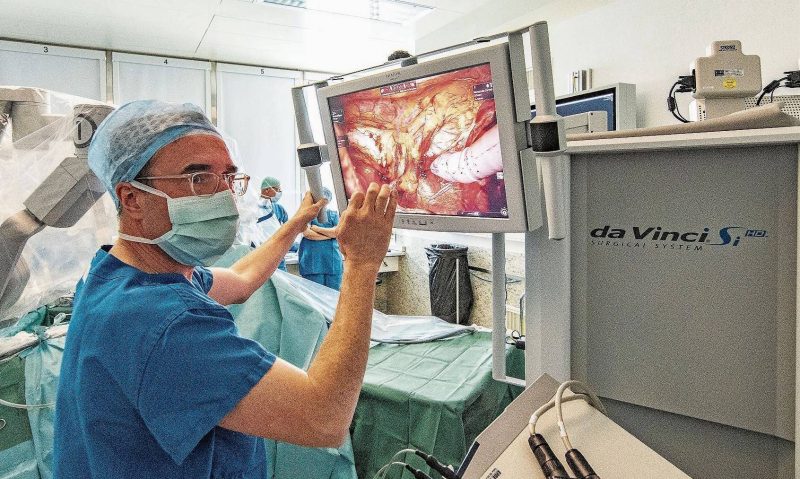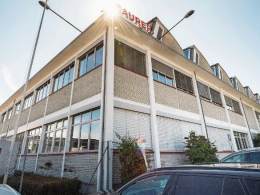Chief physician Svetozar Subotic is helping to further develop the Da Vinci surgical robot with virtual reality in a Basel study.
His hands do not tremble as he loosens the adhesions surrounding the patient's prostate with scissors measuring just five millimetres. The aim is to get to it, because the gland has to be removed. A malignant tumour has taken root. "Foreplay is usually a nice thing, but not here," says Svetozar Subotic dryly as he exposes the urethra and disconnects the vas deferens. The surgeon would have had bloody hands by now if he had performed open abdominal surgery.
In the operating theatre at the Cantonal Hospital Baselland (KSBL) in Liestal, Subotic's gloves are still unsoiled after two hours this Monday. The Head of Urology controls the Da Vinci surgical robot - and he loves it. Only the hands of the assistant doctor, who sits directly next to the patient and attaches tiny titanium or plastic clamps through a tube with various grippers to prevent bleeding, are a little dirtier.
Basel study aims to improve Da Vinci with augmented reality
Modern technology is at the forefront of Subotic's mind: "I'm very interested in virtual reality." It was therefore a no-brainer for him to take part in a USB study: It's called Aurora and aims to make the work of surgeons and pathologists easier - thanks to a precise virtual and printed 3D model of the patient's prostate. Subotic is holding just such a model in his hands again and again this Monday. The area affected by the tumour was marked on it. At the end of the operation, which lasts several hours, Subotic colours the real, removed prostate in the same place. "This allows the pathologists to examine the real, diseased tissue much more quickly."
And the next upgrade is already under development: the study is working on projecting the 3D prostate model onto the screen of the Da Vinci robot as a kind of hologram, i.e. directly over the real organ, so that the surgeon can orientate himself better.
Source: bzbasel









